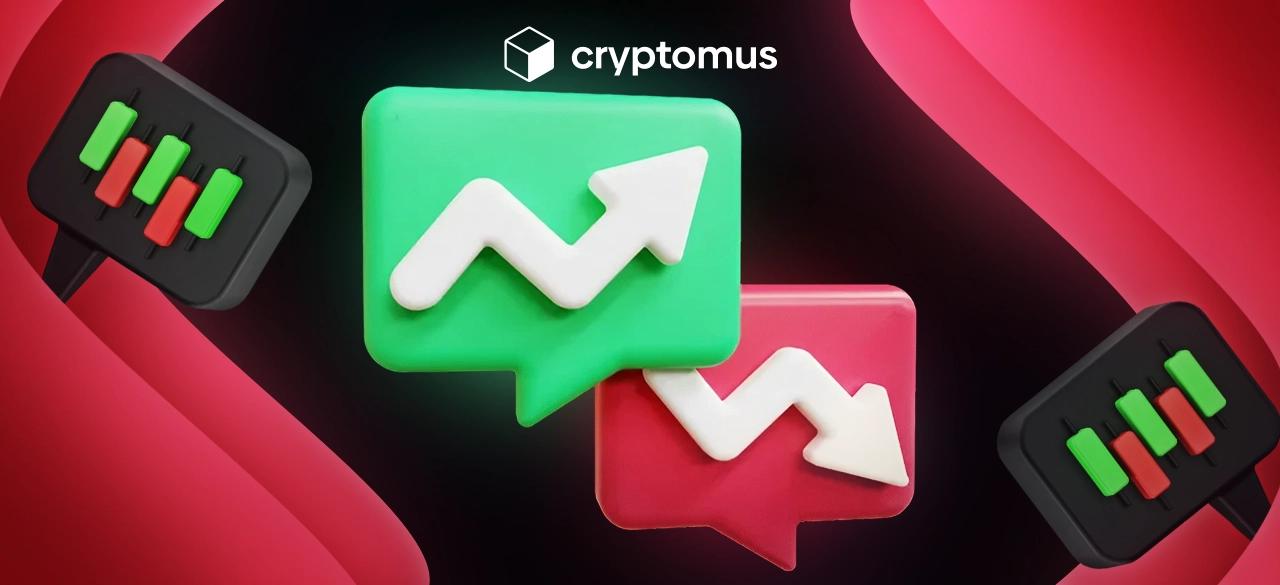
Comment faire du staking de SUI?
Les tokens SUI sont la cryptomonnaie propre au réseau blockchain Sui, alimentée par le mécanisme de preuve d’enjeu (PoS). Avec le développement du marché des cryptomonnaies, le staking devient une stratégie fiable pour faire croître les portefeuilles d’actifs numériques. Et dans ces conditions, le token SUI est une excellente option grâce à sa haute scalabilité et sécurité.
Dans ce guide, nous vous expliquerons les nuances du staking de SUI et vous fournirons un algorithme étape par étape pour ce processus.
Qu'est-ce que le staking de SUI?
Le staking de SUI est le processus de verrouillage des tokens pour sécuriser le réseau blockchain Sui et recevoir des récompenses en retour. Comme pour tout autre staking, les pièces SUI sont envoyées à un validateur pour la vérification des transactions et le maintien du consensus du réseau. De plus, les délégateurs peuvent changer la distribution des votes (tokens) à chaque époque (24 heures), ce qui incite davantage les validateurs à travailler de manière équitable.
Les récompenses du staking des pièces SUI sont déterminées par plusieurs facteurs, notamment le nombre de pièces en staking, la durée du verrouillage des tokens et l'activité globale du réseau. Le montant des gains pour le staking de SUI est de 3,3 % par transaction réseau, qui est payé à chaque époque. Il est essentiel de noter que le montant minimum mis en staking doit être de 1 SUI. En outre, les utilisateurs doivent également payer des frais de gas supplémentaires, et seulement après cela, ils auront la possibilité de déléguer les pièces.
Guide étape par étape sur la manière de faire du staking de SUI
Comme nous l'avons déjà mentionné, pour faire du staking de SUI, vous devez déléguer vos pièces à des validateurs. Il existe également une option pour devenir vous-même un validateur de réseau, mais dans ce guide, nous examinerons la première variante de la délégation.
Le processus de staking de SUI se compose de plusieurs étapes — examinons de plus près cet algorithme.
Étape 1 : Choisir une plateforme pour le staking
Le staking de cryptomonnaie peut être effectué sur des plateformes crypto spéciales. Choisissez parmi celles qui offrent des services de staking et travaillent avec les tokens SUI. Par exemple, le staking de SUI est disponible sur des échanges tels que Binance, KuCoin et Bybit.
Lors du choix d'une plateforme, tenez également compte de son niveau de sécurité, car la fraude est très courante dans le domaine des cryptomonnaies. Par exemple, chez Cryptomus, tous les participants du réseau sont minutieusement vérifiés avant de commencer à travailler. La fiabilité des validateurs est particulièrement surveillée dans ce processus, de sorte que vous pouvez être sûr de la sécurité de vos données. Malheureusement, il n'y a pas d'option de staking de SUI sur Cryptomus. Cependant, si vous êtes intéressé par le staking d'Ethereum, Solana ou d'autres cryptomonnaies populaires, vous pouvez le faire là-bas.
Étape 2 : Acheter des pièces SUI
L'étape suivante consiste à acheter vos SUI que vous allez mettre en staking. Cela doit être un minimum de 1 SUI, mais tenez également compte des frais de gas facturés par le réseau, vous devez donc avoir un montant plus important prêt avant de commencer. Vous pouvez acheter des pièces sur n'importe quel échange qui les propose à la vente, en utilisant des services de paiement ou des cartes. Pour plus de commodité, vous pouvez le faire sur le même échange où vous allez faire du staking, mais vous devez vous rappeler que la plupart des plateformes facturent également des commissions pour l'achat de crypto.
Étape 3 : Choisir un validateur de SUI
Lorsque vous possédez déjà des pièces SUI, vous pouvez les mettre en fonctionnement. Sélectionnez l'option "Stake and Earn SUI" ou une autre option similaire sur l'échange choisi. Après cela, vous devrez choisir un validateur à qui vous délèguerez vos tokens. Vous pouvez configurer les filtres par montant d'enchère et part, APY, heure de début et de fin des récompenses.
Pour choisir un validateur fiable, faites attention au nombre d'utilisateurs délégants — ils indiquent une attitude positive envers le validateur. Regardez aussi son temps moyen en ligne, qui en dit long sur son engagement envers le réseau.
Étape 4 : Déléguer et faire du staking
Après avoir sélectionné votre validateur, vous pouvez commencer à faire du staking. Pour cela, entrez le montant du staking et cliquez sur "Stake now". Vous devrez attendre que votre délégation soit officiellement confirmée — ce processus prend généralement moins de 6 heures. Après l'approbation de votre demande, vous commencerez à recevoir vos récompenses de staking.
Étape 5 : Retirer vos SUI
Si vous souhaitez retirer vos pièces, arrêter le staking ou simplement changer de validateur, vous devrez suivre les mêmes étapes que pour la délégation. Tout d'abord, vous devez sélectionner votre validateur et choisir l'option "Unstake". Lors du retrait des fonds, connectez votre adresse de portefeuille et sélectionnez le token que vous souhaitez échanger. Une fois que tous les détails sont finalisés, confirmez la transaction et attendez le message de finalisation réussie.

Avantages et risques du staking de SUI
Le staking de SUI offre une excellente opportunité de maximiser vos actifs numériques, mais il comporte également certains risques. Avant de mettre en staking vos tokens, examinez de plus près les particularités du processus. Nous avons rassemblé les principaux avantages et inconvénients du staking de SUI.
Commençons par les avantages :
-
Génération de revenus passifs. Le staking de cryptomonnaies, y compris SUI, vous permet d'obtenir des pièces sans commerce actif.
-
Gestion du réseau. La nature décentralisée du réseau Sui donne à chaque participant un mot à dire dans les décisions de mise à jour du protocole.
-
Sécurité du réseau. En contribuant des pièces SUI, les stakers maintiennent l'intégrité du réseau et le protègent contre les potentielles attaques de hackers.
Il y a quelques risques à considérer avant de mettre en staking vos tokens SUI :
-
Volatilité du marché. La valeur de SUI peut fluctuer largement. Si le prix de la pièce baisse beaucoup, cela peut entraîner de faibles rendements du staking.
-
Périodes de verrouillage. Le staking de SUI, comme d'autres cryptomonnaies, implique de "geler" vos tokens, ce qui vous empêche de les utiliser lorsque vous en avez besoin.
-
Validateurs peu scrupuleux. Il existe un risque de se retrouver dans une situation où les validateurs du réseau Sui retardent le travail ou ne transfèrent même pas les paiements aux investisseurs. Cela peut se produire en raison d'une mauvaise validation des participants du réseau.
Le staking de SUI convient à ceux qui apprécient la sécurité des transactions, mais ce n'est pas la monnaie la plus adaptée pour des gains importants, car elle est relativement bon marché par rapport à certaines autres cryptomonnaies. Malgré cela, le staking de SUI reste une excellente opportunité de générer des revenus passifs, en plus de diversifier votre portefeuille de cryptomonnaies.
Nous espérons que vous avez compris l'essence du staking de SUI et que vous pouvez maintenant le faire vous-même facilement. Donc, si vous avez des difficultés en travaillant, vous pouvez toujours vous référer à ce guide et poser des questions dans les commentaires ci-dessous.
Notez l'article








commentaires
0
Vous devez être connecté pour poster un commentaire